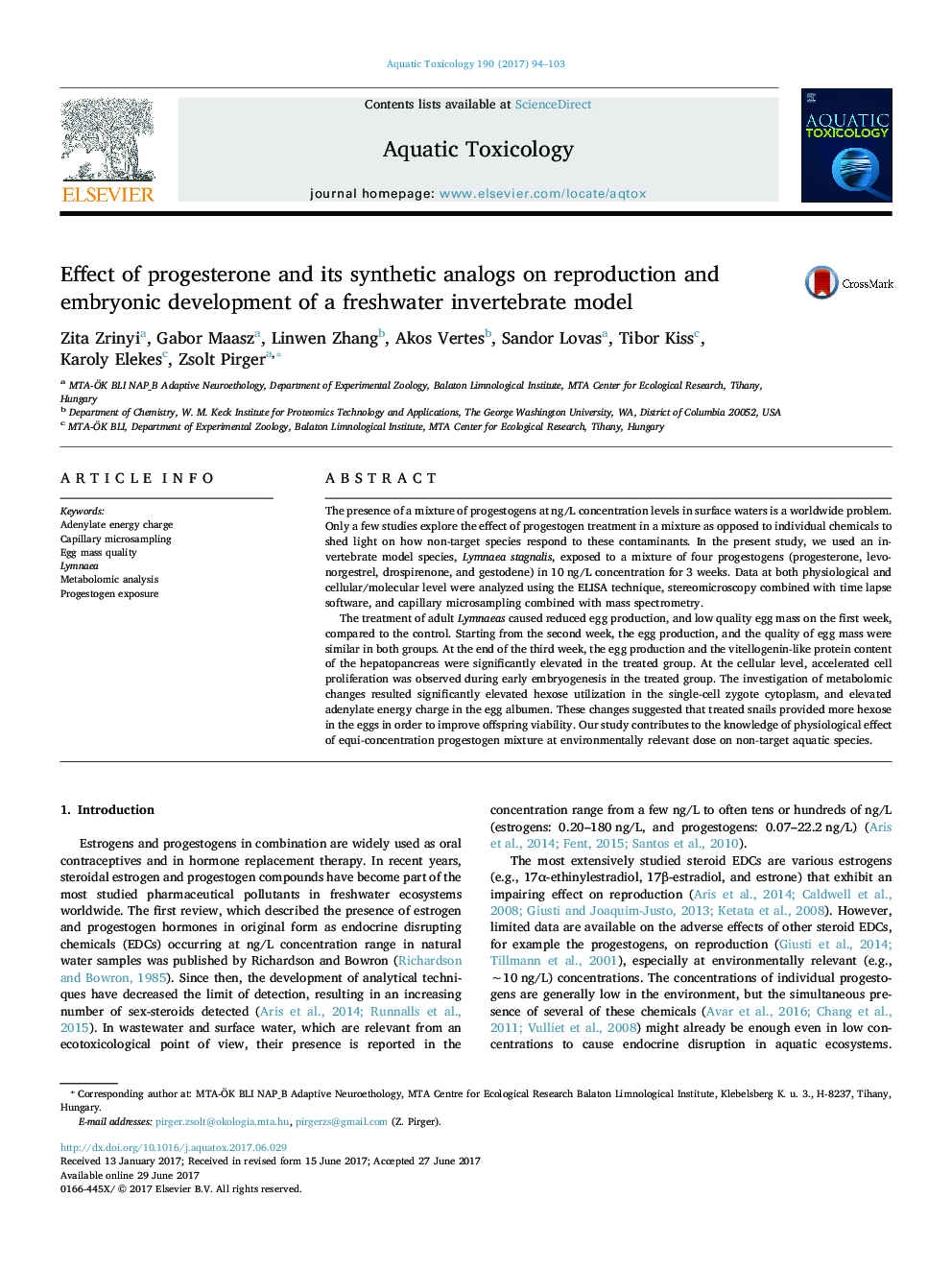| Article ID | Journal | Published Year | Pages | File Type |
|---|---|---|---|---|
| 5764272 | Aquatic Toxicology | 2017 | 10 Pages |
Abstract
The treatment of adult Lymnaeas caused reduced egg production, and low quality egg mass on the first week, compared to the control. Starting from the second week, the egg production, and the quality of egg mass were similar in both groups. At the end of the third week, the egg production and the vitellogenin-like protein content of the hepatopancreas were significantly elevated in the treated group. At the cellular level, accelerated cell proliferation was observed during early embryogenesis in the treated group. The investigation of metabolomic changes resulted significantly elevated hexose utilization in the single-cell zygote cytoplasm, and elevated adenylate energy charge in the egg albumen. These changes suggested that treated snails provided more hexose in the eggs in order to improve offspring viability. Our study contributes to the knowledge of physiological effect of equi-concentration progestogen mixture at environmentally relevant dose on non-target aquatic species.
Related Topics
Life Sciences
Agricultural and Biological Sciences
Aquatic Science
Authors
Zita Zrinyi, Gabor Maasz, Linwen Zhang, Akos Vertes, Sandor Lovas, Tibor Kiss, Karoly Elekes, Zsolt Pirger,
